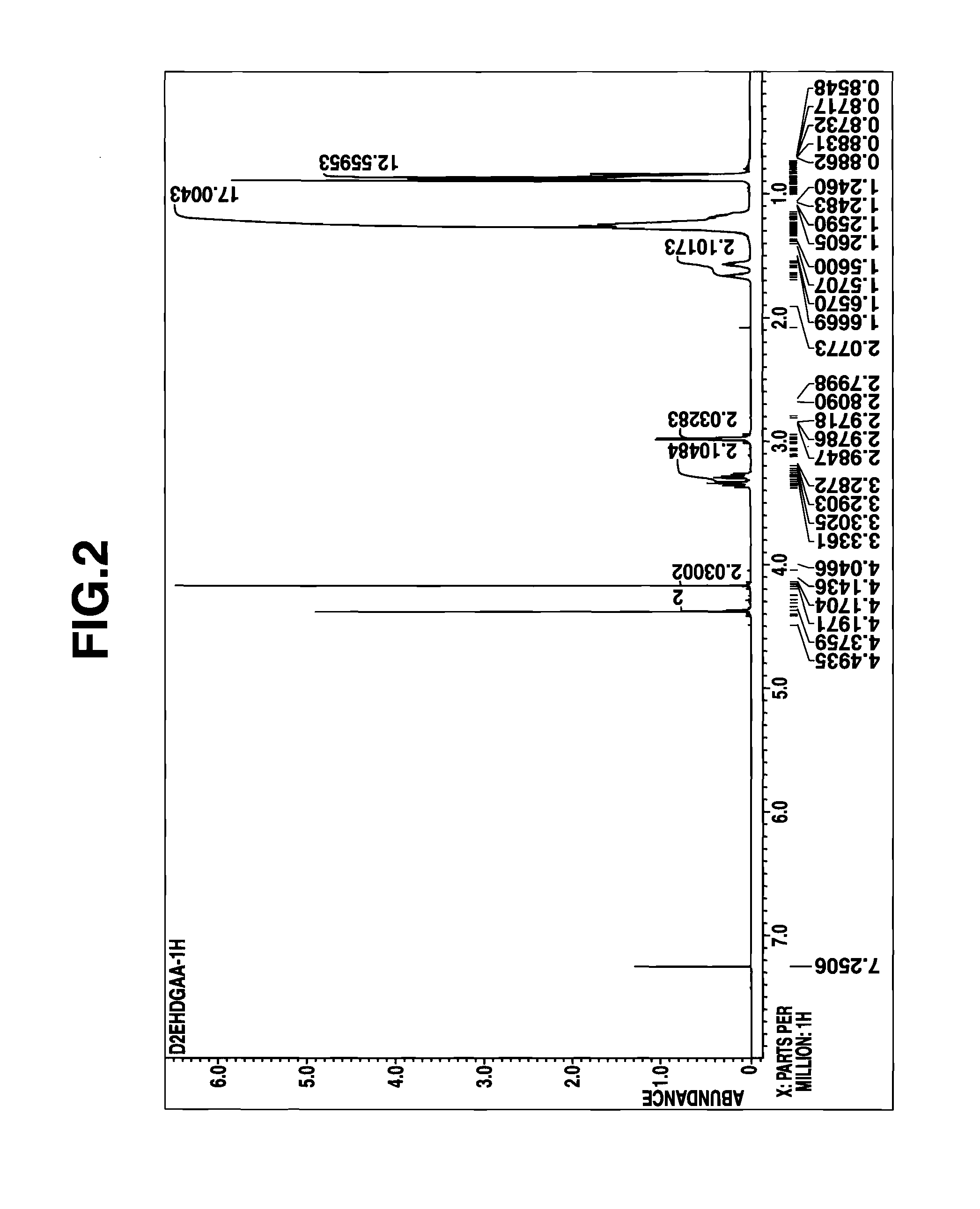Method for synthesizing rare earth metal extractant
a rare earth metal and extractant technology, applied in the preparation of carboxylic acid amides, chemistry apparatus and processes, organic chemistry, etc., can solve the problems of cumbersome operation, complex apparatus, and small extraction capacity of rare earth resources, and achieve high yield, low cost, and high efficiency
- Summary
- Abstract
- Description
- Claims
- Application Information
AI Technical Summary
Benefits of technology
Problems solved by technology
Method used
Image
Examples
examples 7 to 9
[0071]A mixed solution of 60 g (0.45 mole) of diglycolic acid and 230 g (2.25 moles) of acetic anhydride was heated under reflux for 4 hours. Thereafter, the excess acetic anhydride and acetic acid formed by reaction were distilled off in vacuum. To the concentrate (reaction intermediate), A mL of kerosene was added, and then 109 g (0.45 mole) of di(2-ethylhexyl)amine was added dropwise. Stirring was continued for 2 hours at room temperature, yielding a kerosene solution of the reaction product. The amount (A mL) of kerosene as the reaction solvent is shown in Table 5.
[0072]A portion of the reaction product solution was taken out, concentrated in vacuum to remove the solvent, and analyzed by 1H-NMR spectroscopy. The reaction product was identified to be the desired D2EHDGAA. The concentration C0 of the reaction product, D2EHDGAA in kerosene solution (stoichiometrically computed) is shown in Table 5.
[0073]The kerosene solution of the reaction product (D2EHDGAA) thus obtained was dire...
PUM
| Property | Measurement | Unit |
|---|---|---|
| temperature | aaaaa | aaaaa |
| molar ratio | aaaaa | aaaaa |
| molar ratio | aaaaa | aaaaa |
Abstract
Description
Claims
Application Information
 Login to View More
Login to View More - R&D
- Intellectual Property
- Life Sciences
- Materials
- Tech Scout
- Unparalleled Data Quality
- Higher Quality Content
- 60% Fewer Hallucinations
Browse by: Latest US Patents, China's latest patents, Technical Efficacy Thesaurus, Application Domain, Technology Topic, Popular Technical Reports.
© 2025 PatSnap. All rights reserved.Legal|Privacy policy|Modern Slavery Act Transparency Statement|Sitemap|About US| Contact US: help@patsnap.com



